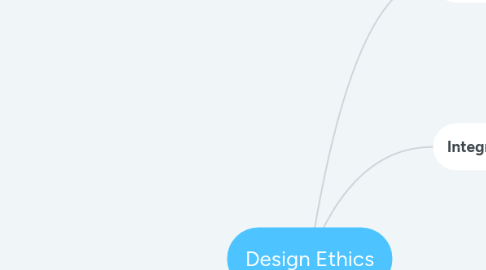
1. Integrity of Performance
1.1. Arise from activity of conceiving planning and bringing products to reality
1.1.1. Personal Morality
1.1.2. Professional codes of ethics
2. Personal character and morality
2.1. Accounts of Moral dilemmas and decision that individual have made
2.2. Direct & Indirect evidence of individual character& Personal value
3. Product Integrity
3.1. Arise from the nature of the products created through the act of design
3.1.1. Synthesis of form and material: generally concerns safety and reliability, compliance with law and regulatory codes, sustainability and service to public goods.
3.1.1.1. Structural integrity of form
3.1.1.2. Usability of form
3.1.1.3. Aesthetics of the form
3.1.1.3.1. Identification with a product
3.1.1.3.2. Complexity of Aesthetics
3.1.1.4. Development of science & technology
3.1.1.4.1. Rationalization and Standardization
4. Ethical standard and the ultimate purpose of Design
4.1. Ethical problem in design isn't distinctive
4.1.1. End purpose: help other people to accomplish their own purposes
4.1.1.1. Ethical problem in design is the same as ethical problem of practical living. Design don't address different subject, but from the same on from different perspectives.
4.2. Ethical problem in design is distinctive
4.2.1. Design is invention and innovation with matters that may be other than they are through human action.
4.2.1.1. Not only is ethics a form of designing but designing is a form of ethics
4.2.1.1.1. No single set of rule for design ethics

